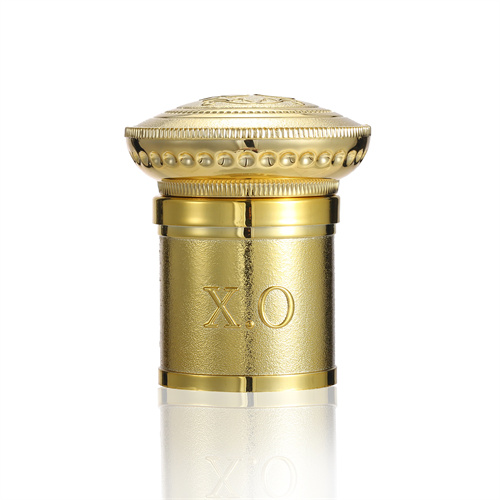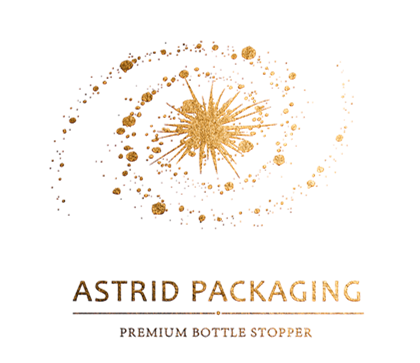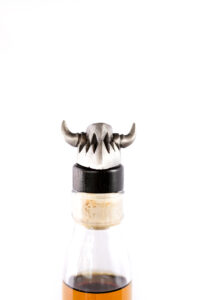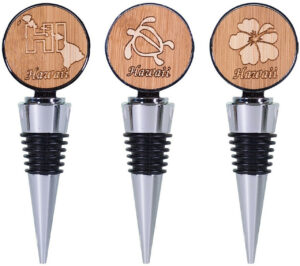As a line of defense to protect wine, wine corks play an important role. There are many kinds of wine corks on the market, and they all have their own characteristics.
Natural Cork
Natural cork is the most common wine bottle stopper. It is made from the bark of Quercus suber / cork oak.
It belongs to natural renewable resources and can be degraded. It is light, soft and elastic, so it can be compressed.
But the disadvantage of this cork is that it may cause cork pollution. Cork contamination is caused by a chemical called Trichlorobenzene methyl ether (TCA), which can bring unpleasant smells such as musty taste or wet paperboard to wine.
Screw Cap
Screw cover is usually composed of metal cover and plastic gasket, which can be recycled.
Compared with natural cork, screw cap has lower cost, better sealing performance, and reduces the probability of cork pollution.
It is suitable for those wines with fruit aroma or suitable for drinking as soon as possible, which helps to retain the original fruit aroma and flavor of the wine.
In addition, the wine sealed with screw cap can be opened easily without the help of any bottle opener.
However, in the long-term aging process of wine, due to the strong sealing of screw cap, it almost isolates the contact between wine liquid and oxygen, which may bring reducing odor such as rotten eggs to the wine.
However, with the development of technology, there are some screw caps on the market that allow trace oxygen to enter the wine bottle, so some red wines that need to be aged can also use this screw cap to seal the bottle, so as to develop more complexity.
Many people think that the wine sealed with screw cap is cheaper, but this statement is not accurate.
Wine sealed with screw cap is very common in emerging wine producing countries such as Australia and New Zealand, including high-quality wine.
Synthetic Cork
The production cost of synthetic plugs is low. They are mostly made of special plastics, mainly petroleum based plastics and bio based plastics.
Their materials generally come from petroleum or sugarcane, sugar beet and other plants. The cork has smooth surface and good sealing.
It is generally suitable for preserving young and easy to drink wine. Controllable oxygen permeability is a highlight of synthetic stoppers.
Winemakers can adjust the oxidation rate of wine by selecting synthetic stoppers with different oxygen permeability.
However, synthetic corks are hard to pull out when opening wine and difficult to plug back after opening.
Moreover, such corks are non degradable and may have a negative impact on the environment. In addition, during the long-term aging of wine, its special material may bring a smell of chemicals to the wine.

Agglomerated cork / composite cork
The composite plug is mainly made of cork particles remaining after making cork plug and adhesive.
The production cost of this kind of bottle stopper is low, but the texture is quite fine.
The disadvantage of the compound plug is that it is easy to break when opening the bottle, and the quality is not very stable.
In addition, the binder may dissolve into the liquor and pollute the liquor. This type of cork is usually not suitable for keeping wines that need to age for a long time.
Glass Stopper
The glass bottle stopper is composed of a glass cap and an annular sealing gasket, and its outermost layer is sometimes wrapped with a special film to ensure the safety of wine during storage and transportation.
The gasket has no taste and can resist the corrosion of alcohol and acid.
This kind of bottle stopper has the advantages of beautiful shape, recyclability, good sealing, convenient opening, and reduces the risk of cork pollution. However, it increases the weight of wine and costs more.
Champagne Cork
The main part of the champagne stopper is made of cork particles, and the bottom is composed of two or three natural cork flakes.
This kind of bottle stopper is suitable for sparkling wine. Its diameter is generally larger than the bottle mouth and is a cylinder before it is inserted into the bottle mouth.
When the cork is inserted into the wine bottle, it will absorb the carbon dioxide in the bottle and continue to expand, resulting in great friction with the inner wall of the wine bottle to resist the air pressure in the bottle.
With the passage of time, the cork finally took on the shape of a mushroom.
This kind of bottle stopper eliminates the unpleasant smell brought by cork from the source and can be used for bottle sealing of still wine, sparkling wine and spirits.
For wine, diam plug has little risk of cork pollution. It is also elastic and has different oxygen permeability.
Zork Closure
Zoke bottle seal is made of 100% recyclable food grade polymer.
A layer of aluminum foil is welded between the cover and the plug column to ensure its good sealing.
The plug column makes a “poof” sound when opening the bottle stopper, and there is a tear off protective seal at the lower end.
This new bottle sealing method was invented by an Australian company in 2010 and is more popular in the region.
It is easy to open, just tear off the protective seal. Zucker bottle seal also avoids the problem of cork pollution.
It is suitable for static wine and sparkling wine. However, this kind of bottle stopper is only suitable for special bottle mouth, which increases the production cost of wine.
Aldea Seal
Alder bottle stopper consists of three parts: shield in direct contact with liquor, chassis made of polymer material and body made of thermoplastic elastomer.
The bracket provides elasticity and support for the bottle stopper, and its unique shape is conducive to the extension of the bottle opener.
The shield is made of high-tech materials through injection molding process.
The surface of the main part is regular and uniform, and its special material provides guarantee for the tightness of the bottle stopper.
This kind of bottle stopper effectively solves the problem of cork pollution, and has stable oxygen permeability, which will not affect the characteristics of wine itself.
When opening wine, the cork is not easy to break. However, based on its material and technology, the cost of this kind of bottle stopper is relatively expensive.
No matter what kind of cork is shouldering the mission of protecting wine.
Through understanding and understanding a wide variety of corks, I believe winemakers can feel the good intentions of the winery for wine.
Although all kinds of corks have advantages and disadvantages, their types are not directly related to the quality of wine, so you don’t have to worry too much about the material of corks, just choose according to your preferences.





